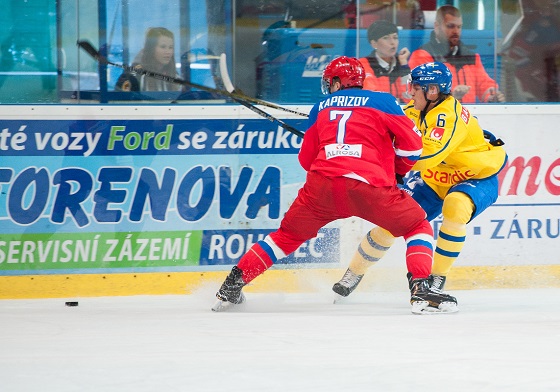2016 U20 Four Nations Tournament
Keeping the Edge
Russian phenoms spark sweep of Europe’s best
Steve Kournianos | 08/29/2016 | New York | [hupso]
The Draft Analyst (New York) — The Russian under-20 national team made quick work of the competition at the Four Nations tournament in Hodonin, Czech Republic, outscoring opponents over three games by a 10-4 margin. Fielding a roster with a mix of both NHL and undrafted Russia-based prospects, this version of their U20 squad opened with a suffocating 4-1 win over Sweden on Friday. It took right wing Kirill Kaprizov — a 5th round pick of the Minnesota Wild in 2015 — just 28 seconds into the game to give Russia a lead it would never relinquish. Kaprizov finished with two goals against the Swedes and added his third and fourth in a 4-2 win over the Czechs on Saturday. Team Russia closed the competition by edging Finland 2-1 in a shootout on Sunday. Russian defenseman Yegor Rykov, who was a fifth round pick of New Jersey last June, led all blueliners in scoring with three assists in three games, and undrafted goalie Vladislav Sukhachev stopped 44 of a combined 47 shots while winning both his starts.
- Date
- 8.26.16
- 8.26.16
- 8.27.16
- 8.27.16
- 8.28.16
- 8.28.16
Prospect Reports
Russia
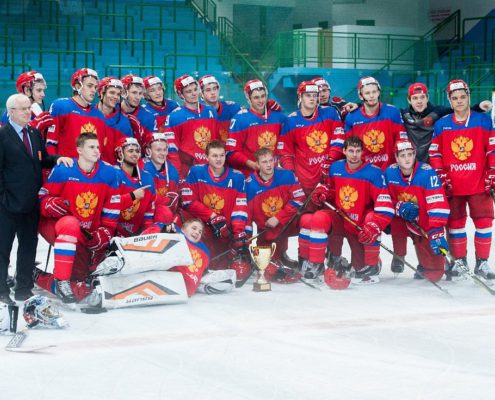
RW Klim Kostin (2017 Draft / Ranked No. 6)
If you used size and quality of play to judge the maturity of a player, it may have come as a surprise that Kostin was the youngest roster player who accompanied Team Russia to the Czech Republic. Blessed with a NHL build before turning 18, Kostin takes an excellent approach towards every shift — make your mark while leaving a few on your opponents. He wasn’t given much ice time at the start of the tournament, bouncing around between the third and fourth lines and getting nothing in terms of special teams play. But that probably had more to do with his age and Team Russia’s penchant for making the younger National Team players earn their minutes rather than gifting them off of reputation. In the end it didn’t mater, as Kostin used every second to mash, deke, glide and press. He scored a critical opening goal against the Czechs’s in Russia’s second game, using his strength to free the puck from an opponent, raced up ice and slid undetected into the slot (of all places) before firing a shot that deflected in off a Czech defender. Yes, Kostin’s modus operandi is goal scoring, but he’s far from one dimensional. He’s a very good passer and doesn’t fold under the pressure of multiple opponents, which serves him well when he decides to move the puck up the ice.
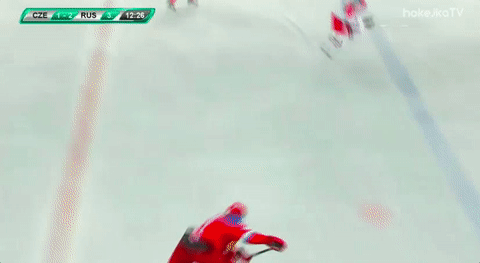
RW Kirill Kaprizov (MIN 5th/2015)
Kaprizov is looking more like one of the better late-round picks from the heralded 2015 draft. He was one of the KHL’s top rookies last year, playing close to 18 minutes a game as a top-6 regular and earning a spot on Russia’s 2016 world junior squad. He was outstanding at the Four Nations, leading the competition with four goals in three games while playing on the top line and power play unit. Kaprizov is fast, slick and has the puck glued to his blade, but he’s not all flash-and-dash. The area in front of and around the goal is where he does a lot of dirty work, and it came as no surprise that he was potting goals off of rebounds. Look for him to be a top option for Team Russia when the U20 squad reconvenes in November for either the next 4 Nations in Gothenburg, Sweden or the CHL-Russia Super Series in Canada.
C German Rubtsov (PHI 1st/2016)
Like Kostin, Rubtsov was one of the Russians’ younger statesmen in Hodonin, manning both the third line and one of the penalty killing units. It was somewhat odd seeing him in a support role, but if there’s one high-profile prospect who can make relevancy out of a decrease in minutes, it’s definitely the defensively-capable Rubtsov. The whistle-happy environment gave coach Valery Bragin the chance to use Rubtsov on defensive-zone draws, especially in pressure scenarios during a close game with the Czechs. He did well on his neutral and defensive zone faceoffs, winning a bunch completely clean, and made a fine play in transition to speed up the right wing with his head up before threading the needle to Kostin for a goal. Remember, it was rumored Rubtsov would play in North America this season, but he’ll likely suit up as a role player for Vityaz’s KHL club before heading to Canada for the WJC.
LHD Yegor Rykov (NJD 5th/2016)
Rykov was Russia’s top defender in Hodonin for several reasons. First, he was on the top pairing and matched up against the opposing top lines at both even strength and on the penalty kill. Second, he manned the top of the umbrella on Russia’s top power play unit, where he displayed his hard, accurate shot. Lastly, he led all defensemen in the tournament in assists (3) and points (3). Drafted as an overager when he was clearly deserving of a first-year selection in 2015, Rykov has been the kid Russia leans on when it plays in U20 tournaments. You might be able to point to his solid play at this same tournament last year (played in Russia) as the beginning of a string of successful international showings that helped him get drafted. Offensively, Rykov is a very good skater and puck mover who uses the home-run pass with accuracy, and his hands are soft enough to play catch and handle tough passes. Russia kept opponents to the outside the entire tournament, and Rykov was a big reason why.
LHD Yegor Zaitsev (2017 Draft / Overager)
We were big fans of Zaitsev despite an injury-filled draft year, so in a way we felt validated when we saw he was not only named to the U20 camp roster, but ended up making the cut altogether. He was far from an obscure prospect (Central Scouting ranked him 34th last year among European draft eligibles), but he was passed over on Draft Day in favor of several defenders who had neither the resume or the potential. In Hodonin, Zaitsev was instrumental on both the penalty kill and as a depth defender in a shut-down role, and Bragin seemed comfortable placing him in key defensive-zone situations. This kid plays a mean, menacing game, and there were times (especially against Finland), where players didn’t look comfortable vacating his space in the low slot. Zaitsev is smart with the puck — if it’s on his stick in the defensive zone, he won’t hesitate to not only skate it out himself, but continue up-ice for numerical superiority. If you’re going by Russia’s overall U20 depth on defense, making the WJC squad may be a bridge too far. But in our view, Zaitsev shouldn’t need a high-profile event to strengthen his draft stock, even if it’s as a 1998-born overager.
LW Alexander Polunin (2017 Draft / Double Overager)
Polunin went undrafted for the second straight season, and it may be for his one-dimensional play as an undersized skill winger. But we give the kid credit — he looks like a real gem when the puck is on his stick. And while people can debate the livelong day as to whether or not this sort of player has any chance to meet the demands of a North American professional league, what cannot be argued is that any team — no matter the league or location — can always take a chance on an offensive forward with exceptional creativity. He played on the top line alongside Kaprizov and center Mikhail Vorobyov, picking up two assists — both in a 4-1 win over Sweden on Friday. Polunin and Kaprizov instantly meshed, and the duo seemed to do all of the legwork in terms of possession and zone entries, turning Vorobyov into more of a bystander.
Finland
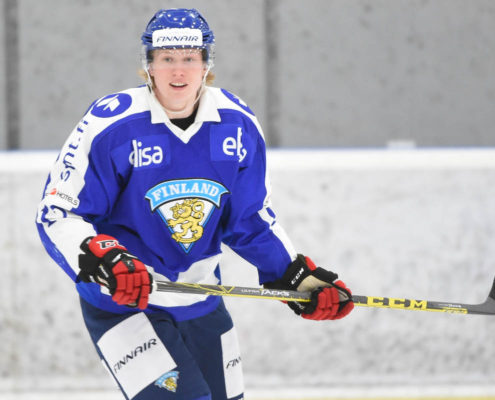
LHD Robin Salo (2017 Draft / Ranked No. 25)
Finland has about a half dozen first-round quality draftees on defense, but only two were part of the festivities in Hodonin. Salo (pictured) is the least capable in terms of speed and puck distribution, but he’s one of the best in defending from the red line inward. He made a couple of mistakes in terms of interdicting his man charging the net, but they were exceptions for a teenage defender who’s been playing against older competition for quite some time. Size and smarts are his best two assets, and he’s consistent in taking a heavy hit in order to complete a play — a rarity in the safety-conscious hockey of today. Beating him to the outside is a fruitless endeavor, as he maintains a tight gap with strong stick-on-puck tactics. He’s shown the ability to contribute offensively (Salo has a hard shot and can cross-ice pass with accuracy), so look for him to expand his offensive game since the defensive portion needs little work.
C Aapeli Rasanen (EDM 6th/2016)
Rasanen continued his strong run of international competitions by standing out as one of Finland’s top forwards. And while it would be fair to point out the Finns’ notable U20 no-shows (Sebastian Aho, Patrik Laine, Jesse Puljujarvi, Janne Kuokkanen, etc.), Rasanen’s two-way skill set as a center almost makes him a unique, if not necessary add to the National Team. The Finns struggled to score in Hodonin, but Rasanen potted two of their four goals. He killed penalties, took defensive zone draws and centered one of the two power play units. We noticed the ice became figuratively smaller as these tournaments progressed, so the speed and skill traditionally inherent in European hockey is seemingly replaced by checking and clogging. But the one constant for Rasanen is that he ends up not only adapting to the nature of a given game, but finds a way to stand out as well. He’s a cerebral player who makes clean plays but used keen vision to locate open linemates for quality chances on several occasions. Rasanen’s hand-eye coordination is outstanding, and he’s lightning-quick at taking a turnover and turning it into a scoring chance in a split second.
LHD Markus Niemelainen (EDM 3rd/2016)
Niemelainen had a strong tournament playing alongside Salo, leading Finland’s second pairing and taking a role on both the power play and penalty kill. He’s a big kid with a massive wingspan, so defending in one-on-one situations has never been a problem. What we noticed almost immediately was an improvement in reading plays and taking calculated risks. The Niemelainen of last year was way too restless in the slot, and his wandering cost him. This wasn’t the case at the Four Nations, where he seemed to communicate well with Salo (and supporting forwards), and released from his slot duties with decisiveness and success. Sure, he still wanders as far as the opposing point. But we didn’t catch him puck gazing or keeping his back turned, and his first-step quickness looks like it improved. Niemelainen showcased his love for shooting the puck, and on occasion took it up-ice with confidence but minus any sort of creativity.
LHD Miro Heiskanen (2017 Draft / Ranked No. 31)
Heiskanen was the best of Finland’s eight defensemen, playing on the top pairing and quarterbacking the power play. And speaking of quarterback, rarely did we find him itching to get rid of the puck when danger appeared. He liked to call audibles while curling back to reset, and was whipping stretch passes off his back foot with authority and accuracy. If an opening is there, Heiskanen is a strong-enough skater to attack it with speed before making a quick head-man as the walls collapse around him. He’s quite elusive when dropping down well below the circles, but he seems comfortable hovering around the high slot or above the rings with the hammer cocked. Heiskanen has a very good shot, and he keeps it on net regardless of the maze of skates and sticks in front of him. A lot of that has to do with the constant movement of his feet, while pump fakes and jukes are used if the initial look is blurred. The bad news was Finland was kept to the outside most of the tournament and little room was afforded for skill players like Heiskanen to exploit.
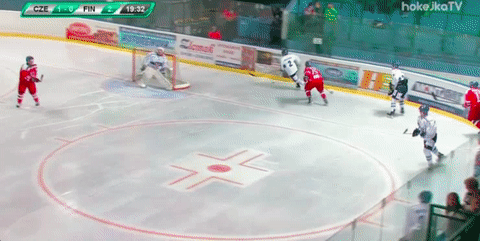
C Joona Koppanen (BOS 5th/2016)
This tournament was the first since the U18 Five Nations last December where the 6’5 Koppanen was given the opportunity to showcase his offensive skills. Relegated to a depth role at the U18 worlds but expected to play on Ilves’ U20 top six, Koppanen displayed puck savvy and calmness at this tournament, looking more like a playmaking wizard than some sort of matchup, depth type. Granted, the Finns had trouble scoring and their size was pushed away from the middle. But Koppanen seemed comfortable controlling the puck in tight spaces, using his reach and long stick to ward off defenders while slipping the puck to open points. He didn’t look as gangly with his skating as he did a year ago, and we’d be lying if we said we weren’t impressed with his confidence.
Czech Republic
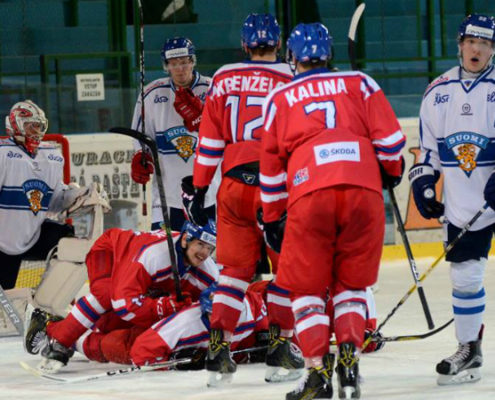
RW Radek Koblizek (2017 Draft / Overager)
Listen, we won’t mince words — Koblizek is tiny. But the kid can flat out fly and make plays off the rush, which is exactly what he did all tournament long. Sometimes he seems out of control, and he’ll even try to stickhandle through five guys. To us, it was perfectly acceptable given the cramped conditions he and every other finesse forward faced. Furthermore, it wasn’t like his dashes up ice were catching his teammates off guard — this is who he is, and they looked as if they knew when to brace themselves for one of his up-ice adventures . Koblizek has excellent first-step quickness and looks like he was fired out of a self-propelled howitzer. He’s no longer Extraliga property, however, as he signed with Karpat in Finland, where he’ll play on the U20 squad likely in a depth role.
LHD Filip Hronek (DET 2nd/2016)
You’ll have to excuse us if we sound like a broken record, but boy can Hronek play the game of hockey. After an impressive WJC as a draft-year eligible, Hronek was the Czech Republic’s best player of any position, logging the most minutes in every situation. He made multiple impressive plays per game, and even strung together half-periods of defensive-zone dominance. Not bad for a kid listed right at six feet, but don’t even thjnk for a moment that he’s the same scrawny kid we saw at the same U20 Four Nations last August. The increase in upper body strength was evident in both his ability to pin and hold, and fend off opponents while on the move. The Red Wings have a dandy on their hands, and they’ll get to see more of him when he suits up for the OHL’s Saginaw Spirit.
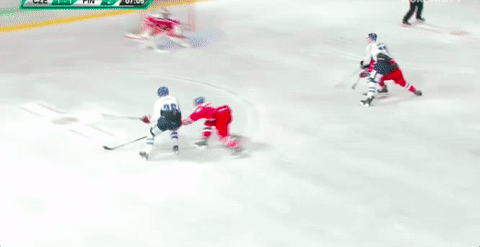
LW Lukas Andel (2017 Draft / Overager)
Andel is a swift but stocky puck wizard who plays similar to Koblizek but with a tad more polish to his overall game. He’s a center with natural playmaking abilities and does not hesitate when he identifies the open man. Andel is an excellent straight-line skater with solid balance and strength on the puck, and we saw opponents play standoffish as he entered the neutral zone with speed. He scored a goal in three games but was more noticeable than the standard box score would tell you.
C Dominik Lakatos (2017 Draft / Double Overager)
Lakatos was one of the better forwards in the tournament, leading the Czechs with three goals in three games and eating the most minutes as their top center. He’s a strong kid with very good mobility and an absolute load to handle during board battles, and if the puck gets cleared down towards his own end, he’s confident enough to speed back and lug it up the ice himself. Lakatos looked like a real leader out there, and he revealed incredibly soft hands for what really is a power center.
RW Daniel Karovsky (2017 Draft / Overager)
A 1998-born power forward who would be a surefire NHL pick is he just tried to look as if he cared from the start of a shift until the very end. Kurovsky has several tools the modern-day NHL coach would want — size, strength and a wicked shot. The downside is that he waits for the puck to come to him no matter what zone he finds himself in. Sure, if you are that good at wiring a hard shot on net off the pass, it’s best to find an opening and cock the hammer. And while it’s only a three-game tournament — a late-summer one at that — he’s the kind of player who should have feasted on the several dozen smaller types who can’t match up with his physical virtues.
Sweden
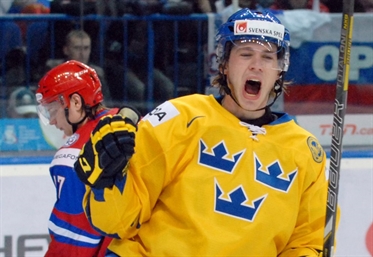
LW Elias Pettersson (2017 Draft / Ranked No. 8)
Pettersson (pictured), who was one of two first-year eligibles Sweden brought to the Czech Republic, had a strong showing for a team that couldn’t bury a nickel in the proverbial mound of sand. The Swedes were well represented with NHL draftees (12 total), but the offense couldn’t get much going at even strength. Nevertheless, Pettersson displayed above-average quickness and a decent stride while darting into the areas where he knew the puck should go to. Defensively, he’s a gem who consistently covered up for wandering defensemen while keeping his head on a swivel and vacating only when it was prudent. There were times when we felt he purposely lulled opponents into thinking he wasn’t capable of doing anything exciting, only to blast through traffic with an explosive burst and puckhandling display. He made a heads-up play off a offensive-zone draw in the left circle to spot the open right point that led to a late tying goal in a 2-1 overtime win against the Czechs.
C Marcus Davidsson (2017 Draft / Ranked No. 23)
Davidsson is a dynamic player with lots of speed who for several reasons didn’t get much of an opportunity to display it. Relegated to the fourth line for most of the three games, he made the most of his time at even strength by displaying excellent awareness in his own end and winning the handful of defensive-zone draws he took. Like Pettersson, Davidsson covers the slot while his teammates release from crease-area responsibilities, and he’ll front his man while being wary of options either behind him or on the periphery. He also killed penalties, using solid footwork and quick bursts to smother the points and prevent defensemen from dumping it down low. Of course, Davidsson is known as an offensive threat, but when a team combines to score only three goals in three games, we’d be remiss if we didn’t focus on all aspects of a specific prospect’s game.
RHD Jacob Cederholm (WPG 4th/2016)
This was some of the best hockey we’ve seen the normally-reserved Cederholm play, and the lack of any big names on Sweden’s blue line may have had something to do with it. He’s always been a reliable defender from a positioning standpoint, and on occasion he’ll drop down into the circles for a chance or two. He was far more assertive and confident in Hodonin, using his long stride and puck control to initiate breakouts. The Swedes were trailing most of this tournament, so he was almost forced to play more aggressive. Cederholm made sound decisions regardless of whether he was faced with a wall of sticks and skates to his 12 o’clock, and his passing on the power play was both crisp and accurate.
Notes
Russia’s G Vladislav Sukhachov (2017/1998) was as technically perfect as one could be…Washington Capitals draftee G Ilya Samsonov (1st/2015) was barely tested in a 4-1 win over Sweden but his rebound control was spotty…Alexander Polunin obliterated the ankles of puck-gazing Swedish LHD Linus Nassen (FLA 3rd/2016) from the boards with a nifty head fake…LW Axel Jonsson-Fjalby (WSH 5th/2016) played in all three games as a depth player but was a non-factor…The smooth stride and swiftness of Finnish LW Emil Oksanen (2017 Draft / Ranked No. 55) was on display but it was otherwise one of his weaker tournaments…The Czech line of LW Jiri Karafiat, C Petr Kodytek and RW Daniel Kurovsky played a heavy game that resulted in several lengthy cycles and scoring chances…LW Jesper Bratt (NJD 6th/2016) tallied a game-winning goal in overtime for Sweden that was erroneously credited to LHD Kris Gunnarsson (2017/1997)…G Markus Ruusu (DAL 6th/2015) put the rebound of a bad angle shot right into the open far side for Lukas Andel to bury the tie-breaker late in the second of Finland’s 4-2 loss to the Czechs. It was Ruusu’s only appearance in the tournament.

